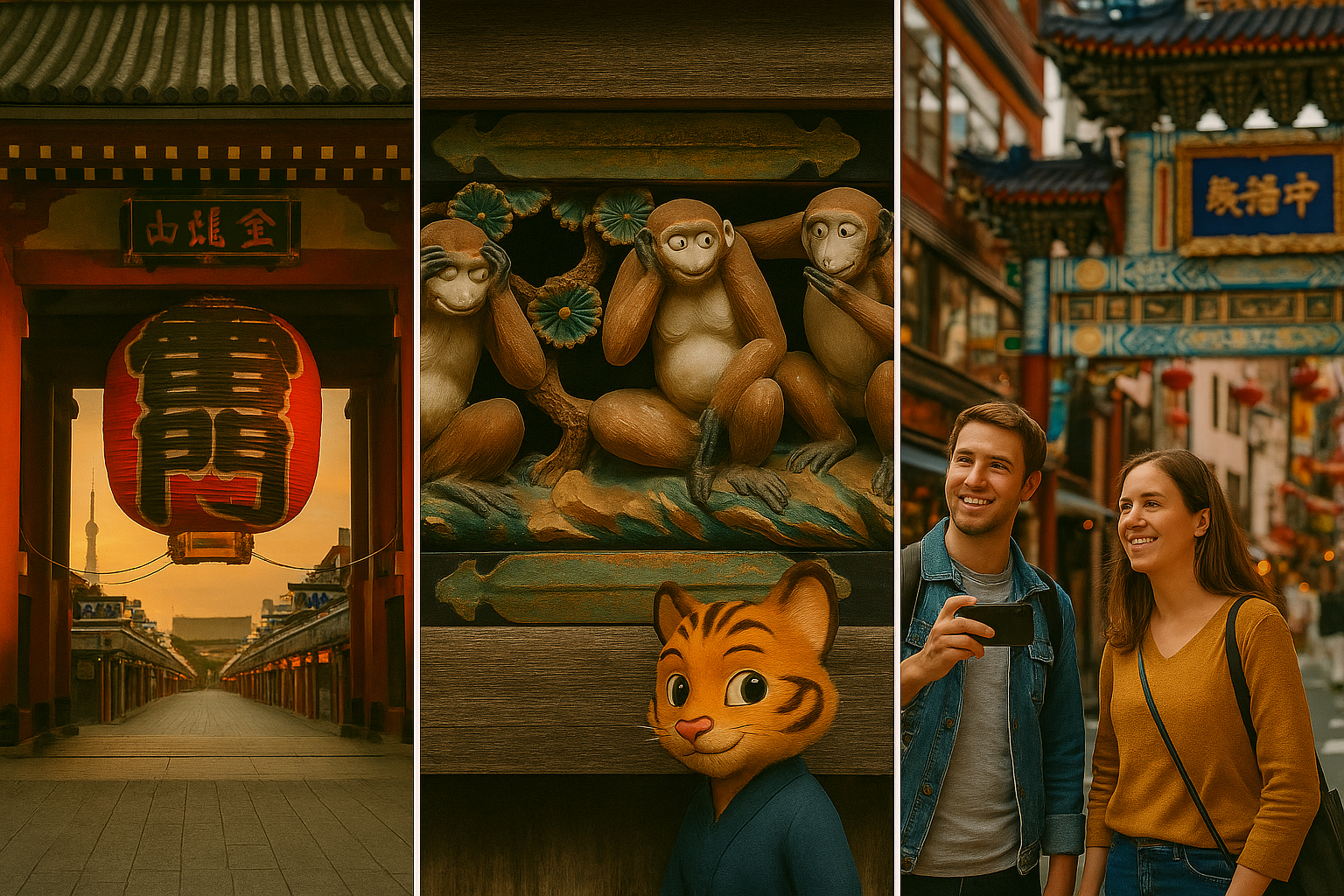When people think of traveling to Japan, Tokyo is usually the first destination that comes to mind. And while Tokyo is indeed a world-class city full of attractions, the Kanto region has so much more to offer beyond its capital. From ancient temples in Nikko to relaxing hot springs in Hakone, Kanto is packed with diverse experiences that blend history, nature, and modern culture.
Let’s take a closer look at what makes the Kanto region worth exploring — and discover a few things you might not expect as a visitor.
Index
🗺️ Highlights of the Kanto Region
📍 Tokyo – The Heart of Modern Japan
Of course, no trip to Kanto is complete without Tokyo. You’ll find everything from historic temples in Asakusa to futuristic neighborhoods like Shibuya and Odaiba. Don’t miss the incredible food scene — sushi, ramen, yakitori — and vibrant street fashion districts like Harajuku.
📍 Nikko – Spirituality and Nature
Located about two hours north of Tokyo, Nikko is famous for its ornate Toshogu Shrine, dedicated to Tokugawa Ieyasu, the founder of the Edo shogunate. The surrounding national park offers scenic waterfalls, hiking trails, and even wild monkeys roaming freely. It’s a perfect escape for those seeking cultural depth and natural beauty.
📍 Kamakura – Zen and the Sea
Just south of Tokyo, Kamakura offers a more relaxed, historical atmosphere. The Great Buddha “Daibutsu“, Hasedera Temple, and bamboo groves create a peaceful vibe. Plus, its coastal location makes it a nice getaway from the urban rush.
📍 Hakone – Hot Springs and Mt. Fuji Views
Hakone is one of Japan’s top onsen “hot spring” destinations. Ride the ropeway for views of Mt. Fuji, try the famous black eggs “Kuro-tamago” from volcanic Owakudani, and unwind in a traditional ryokan with a private bath.
😲 Cultural Tips & Surprises for Foreign Visitors
🚉 Complex Train Systems
Tokyo’s train network is massive. While it’s convenient, it can feel overwhelming at first. IC cards like Suica or PASMO make life easier — just tap and go, even between different railway companies.
🧼 “Too Clean to Be True”
Many visitors are amazed by how clean public spaces are, especially given the lack of trash cans. That’s because Japanese people often take their garbage home. It’s part of the culture of personal responsibility.
🎁 The Art of Omiyage “Souvenirs”
Buying gifts for coworkers, friends, or family is an unspoken social rule in Japan. Even short trips often include bringing back regional sweets or snacks — this surprises many first-time visitors.
🐒 Watch Out for Wild Monkeys
In areas like Nikko, monkeys are a common sight. They might seem cute, but don’t feed them — they can become aggressive and are considered wild animals.
🧠 Fun Trivia: Did You Know?
🔤 Where Does “Kanto” Come From?
“Kanto” means “East of the Barrier.” It referred to areas east of the old checkpoint called Hakone Sekisho, which separated the Edo region from western Japan.
🗿 The Great Buddha of Kamakura Was Once Indoors
The famous bronze Daibutsu originally stood inside a temple building. After multiple typhoons and a tsunami destroyed the structure, it was left in open air — and has remained that way since the 15th century!
🥚 The Legend of Hakone’s Black Eggs
In Owakudani, you can buy eggs boiled in sulfurous hot springs, turning the shells black. Local legend says eating one adds 7 years to your life. Whether true or not, it’s fun (and tasty).
🧳 Conclusion
Kanto isn’t just about skyscrapers and anime stores. It’s a region where you can walk through ancient shrines in the morning, soak in a hot spring by afternoon, and eat world-class food by night.
For first-time visitors, it offers the perfect balance of comfort and discovery. And for returning travelers — Kanto still has plenty of hidden gems to uncover.
This article focuses mainly on must-see travel spots and cultural tips in Kanto. Want to dive deeper into local food, dialects, or regional traditions? Stay tuned — more Kanto content is on the way!
Next stop? Kansai, where centuries of tradition and delicious street food await.
P.S.
Tokyo is familiar to me. While there are many people and restaurants in this city, the stores are also changing rapidly. To be honest, I have a hard time recommending it as a sightseeing spot… Sensoji and gardens are probably the most popular. I am sure Americans would not recommend New York, right? If you have any questions, please feel free to ask.
またね(Matane)!



コメント